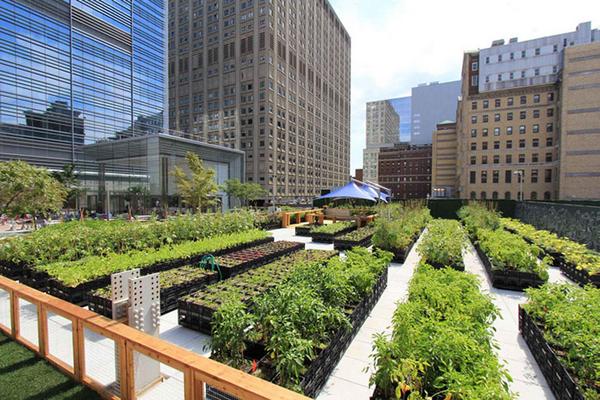The Single Strategy To Use For City Blooming
The Single Strategy To Use For City Blooming
Blog Article
Not known Details About City Blooming
Table of ContentsOur City Blooming PDFsMore About City BloomingCity Blooming for BeginnersLittle Known Questions About City Blooming.The 10-Minute Rule for City Blooming
Interested in growing food available for sale in the City of Chicago? Considering beginning a neighborhood yard? Changes to the Chicago Zoning Regulation permit agricultural usages like area gardens and city farms in lots of parts of the city. Below is a listing of often asked concerns relating to the rules and guidelines that growers ought to take into consideration when preparing a city farming project.
The zoning change does not customize any type of other codes managing composting, structure authorizations, acquiring or renting City possessed home, organization licenses or environmental contamination. There are existing codes that manage these issues and they remain completely effect and might apply to your project. Community gardens are generally possessed or taken care of by public entities, public organizations or community-based organizations and kept by volunteers.
Urban farms grow food that is planned to be offered, either on a nonprofit or for-profit basis. As a result of their commercial purpose, city farms require a company permit. Yes. A neighborhood yard is allowed to sell excess generate that was expanded on site if the sales are accessory or subordinate to the garden's primary purpose explained over.
Some Ideas on City Blooming You Should Know
Composting is enabled however just for plant product that is created and used on site. The amount of garden compost product can not go beyond 25 cubic lawns at any type of offered time according to the standards in 7-28-715 of the City's Municipal Code. Yes. Since the dirt at most brand-new garden websites needs amending, garden compost, soil, timber chips, or various other products can be obtained to create or improve the growing room - sustainable gardening.

If a structure authorization is required after that the hoophouse will certainly be thought about an accessory structure. You can discover out more concerning the building authorization needs by speaking to the Division of Buildings. The 25,000-square-foot size restriction is intended to prevent a single area yard from controling a provided block or detracting from the block's existing residential or commercial character.
The limit does not use to gardens situated in Public Open Area (POS) districts. Can there be even more than one community garden that is 25,000 square feet on a single block? Fence is not called for, nevertheless, yards that have big car park locations may be required to mount fence or other landscaping attributes.
Facts About City Blooming Uncovered
B1 & B2 districts call for that all industrial use activities be conducted indoors. R areas limit industrial activity. The laws show the function and intent of the Zoning Code. Is fencing required for city ranches? Yes. Fencings may be required, together with landscape design and screening, for sure vehicle parking locations and exterior work or storage locations depending on area and the particular task occurring.
Yes. Urban ranches require building permits and zoning authorizations before construction. Various other kinds of city review may be needed depending on specific structures, tasks, size, landscaping, licensing, public health and stormwater monitoring concerns. Most of these requirements are determined in the task style or permitting process, however, the candidate may be accountable to separately determine specific licenses or allows that may be required.
Yes. The sort of certificate is determined by what is occurring at the website. The Division of Business Affairs and Consumer Protection can assist identify the particular sort of service certificate that's called for. Yes. Off road car park is needed for a lot of industrial tasks in Chicago. The called for variety of parking areas is based upon the number of staff members working with website and not the square footage of the expanding room.
All About City Blooming

A city farm can offer compost product generated on site, nevertheless, the procedure should conform with the laws in 7-28-715 of the Chicago Municipal Code. Aquaponic systems are enabled indoors on urban ranches in many zoning areas.
Up to five hives or nests of honey bees might be maintained as an accessory usage. Beekeepers must sign up with the Illinois Division of Farming. To find out more concerning the suggested zoning change you might contact the Division of Real Estate and Economic Development, Bureau of Preparation and Zoning at 312.744.8563.
, which takes location in country locations at the side of suburban areas.
Getting My City Blooming To Work
It can entail a movement of natural farmers, "foodies" and "locavores", who seek to develop social media networks established on a common principles of nature and neighborhood holism. These networks can establish by way of official institutional support, becoming integrated right into regional town preparation as a "transition community" motion for lasting city development.
In either instance, the extra straight access to fresh veggie, fruit, and meat products that may be realised through urban agriculture can boost food safety and food safety while look at here now decreasing food miles, leading to lower greenhouse gas discharges, consequently adding to climate change reduction. A few of the very first proof of metropolitan agriculture comes from Mesopotamia.
Report this page